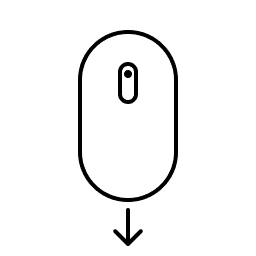Snippets about: Fitness
Scroll left and right !
Building Physical Resilience Through Discomfort Inoculation
After pushing through the pain and exhaustion of packing out his caribou, the author feels noticeably stronger and more capable. Where the first few miles utterly taxed him, by the end he finds a semblance of ease in the effort, tapping into new reserves.
He learns that 80% of people who train conventionally in the gym still fold on their first day in true backcountry conditions. Being fit isn't the same as being useful, durable and adaptable. The author realizes that what's missing in modern fitness is the regular inoculation of productive discomfort; intentional challenges that build the capacity to sustain long, grinding, full-body exertion without breaking down.
The author makes a vow to start cross-training his body and mind for the unknown and the uncomfortable. Not through sado-masochistic feats, but through practices that progressively, controllably nudge his thresholds. More long hikes with a pack. More time in the cold. More hauling awkward objects. Discomfort inoculation as a preventive discipline, rather than an emergency crash course.
Section: 1, Chapter: 21
Book: The Comfort Crisis
Author: Michael Easter
How A Rucking Habit Can Enhance Strength And Cardio
To make "carrying the load" a more consistent practice, the author interviews the founder of GORUCK, an ex-Green Beret who promotes rucking as the ultimate full-body workout. Jason McCarthy defines rucking as walking with a weighted backpack at a decent clip, enough to get the heart rate up.
Rucking has a long history in military training and hunting/gathering, and is still the primary way Special Forces soldiers build endurance and mental toughness. But it's accessible to anyone. Experts recommend working up to carrying 20-50 pounds and going for 30-60 minute ruck walks multiple times per week, either with a weighted pack or weighted vest. Keeping the weight ≤50 pounds minimizes risk of injury while still providing ample physiological challenge.
Section: 1, Chapter: 20
Book: The Comfort Crisis
Author: Michael Easter
The Three Pillars of Physical Wealth
Physical Wealth is built on three controllable pillars that exist on a spectrum from beginner (Level 1) to advanced (Level 3):
1. Movement : Daily body movement through cardiovascular exercise, resistance training, and activities promoting stability and flexibility.
2. Nutrition : Consumption of primarily whole, unprocessed foods to meet major nutrient needs, with proper attention to protein intake and supplementation as necessary.
3. Recovery : High-quality, consistent sleep performance and other recovery-promoting activities like breathing exercises, meditation, or temperature therapies.
Section: 4, Chapter: 24
Book: The 5 Types of Wealth
Author: Sahil Bloom
The Mental Cost of Inactivity
"When faced with chronic inactivity over the lifespan, as is common in modern industrialized societies...[our] lack of either exercise in general or cognitive demands during exercise may lead to capacity reductions or suboptimal capacity maintenance in the brain similar to those seen in other organ systems....Our brains adaptively reduce capacity as part of an energy-saving strategy, leading to age-related brain atrophy."
Section: 1, Chapter: 20
Book: The Comfort Crisis
Author: Michael Easter
Lift For Life
Resistance training recommendations for longevity:
- Focus on compound functional movements (squat, hinge, push, pull, carry)
- Prioritize grip strength, core stability, hip extension
- Train eccentrically (negative reps) for strength & tendon health
- Aim to lift 2x bodyweight deadlift, 1x bodyweight squat, 15+ pullups
- Women need to lift too; prevents bone loss & frailty
Section: 3, Chapter: 12
Book: Outlive
Author: Peter Attia
Dan Go's Physical Transformation
In his mid-twenties, Dan Go was heading down a destructive path. Bullied as a child and told he'd never amount to anything, he dropped out of high school and developed harmful habits. His self-worth eroded as his physical appearance changed, creating a vicious cycle.
Everything changed when his father gave him a one-month gym pass. On the first day, he struggled on the treadmill. By day seven, he started feeling comfortable. On day thirty, he noticed his belt needed to be tightened one notch.
That small change represented something profound: Dan had reclaimed control of his life. As he continued focusing on fitness, everything changed - his mind functioned better, his self-talk improved, and he developed a belief that anything was possible.
Section: 4, Chapter: 22
Book: The 5 Types of Wealth
Author: Sahil Bloom


